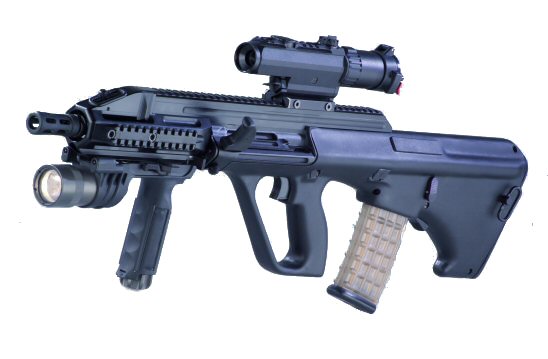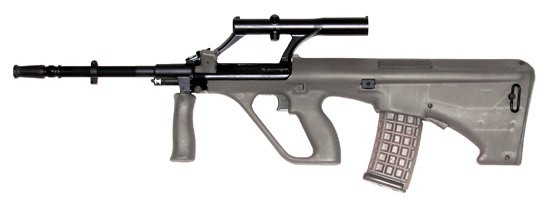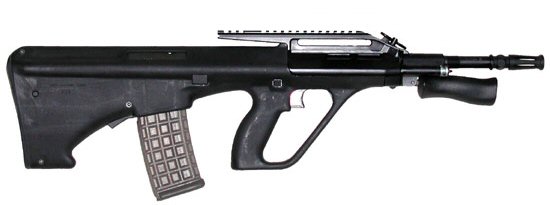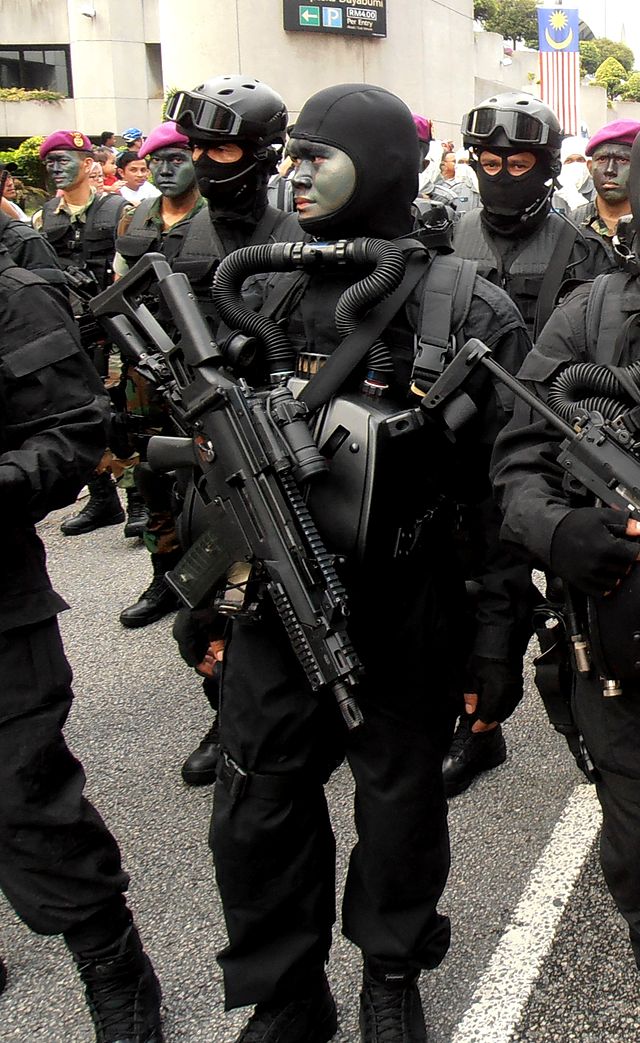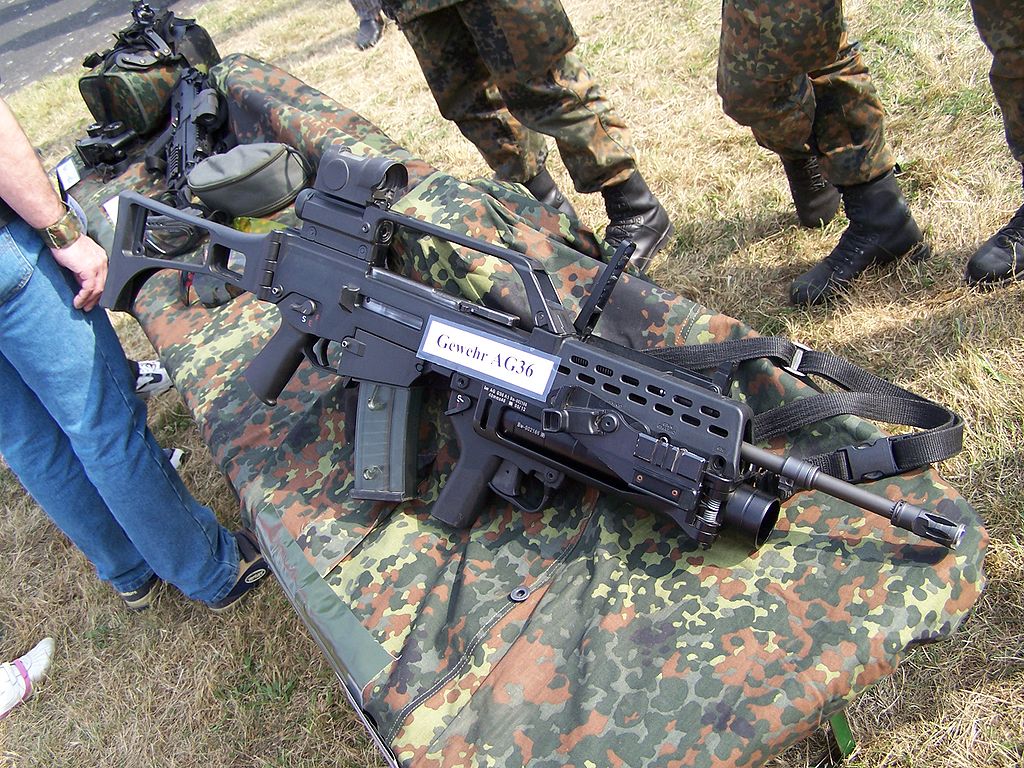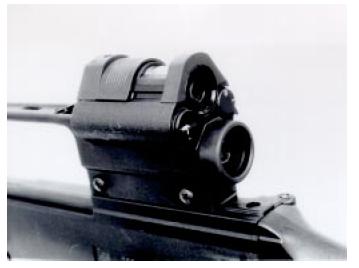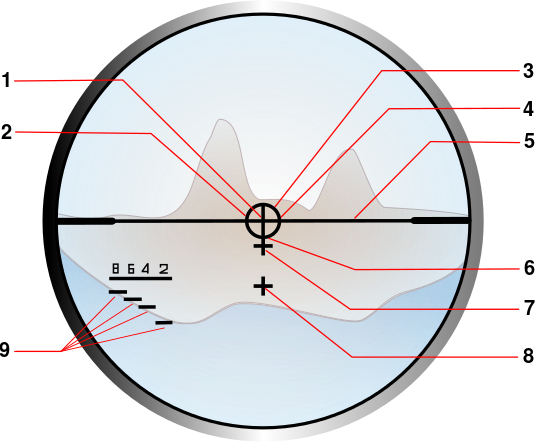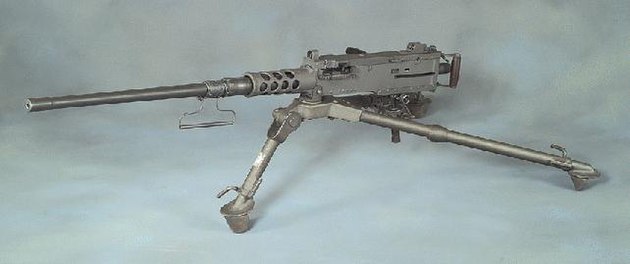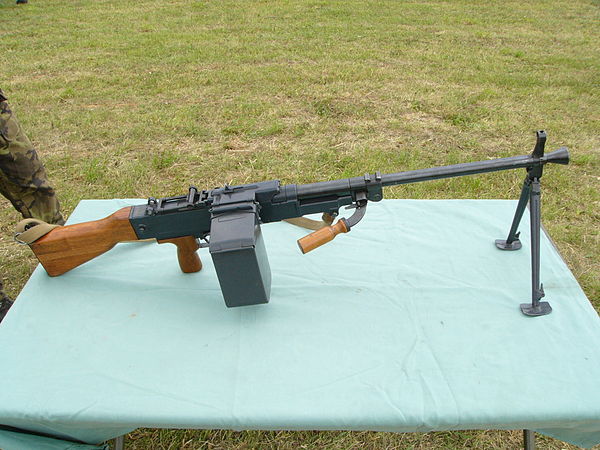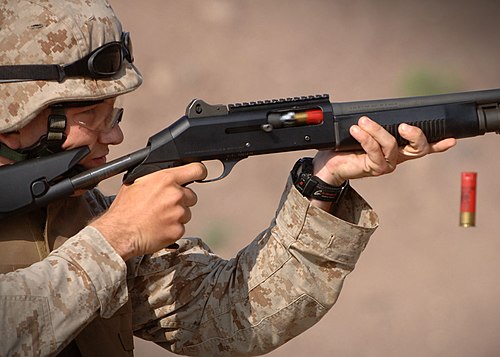revolution
MEMBER
(Users)


- Netherlands

- New Zealand: In service since 1988. The first 5,000 weapons delivered were manufactured in Austria by Steyr Daimler Puch. The majority of weapons now in service are the Australian ADI-made Austeyr F88 variant. It is called the IW Steyr(Individual Weapon Steyr) in service of the New Zealand Defence Force. The Defence Force is currently (2014) seeking a replacement for the Steyr AUG after concerns about its performance in Afghanistan.

Morocco
- Oman

- Pakistan: Used by Special Services Group,Special Services Group Navy, Frontier Constabulary,[61][62] and Airport Security Force (ASF).

- Papua New Guinea: F88 variant.

- Philippines: Used by the Scout Rangers.

- Poland: JW From special forces group.

- Saudi Arabia

- Serbia: 72nd Reconnaissance-Commando Battalion.

- Free Syrian Army: fighters have acquired AUG rifles.

- Republic of China

- Tunisia AUG was chosen since 1978 to be the Primary weapon of the Tunisian Army, The first regular unit to be issued with the AUG A1 was the GTS, later on, the leadership started to arming the National Guard with Sturmgewehr 58 (FN FAL) and the Army with the AUG A1/A2/A3 variants, including the Army's Special Forces.

- Turkey: Maroon Berets and Police Special Operations Department.

- United Kingdom

- Falkland Islands: Falkland Islands Defence Force.

- United States: U.S. Immigration and Customs Enforcement.

- Uruguay: Received 7,000 Steyr AUG A2UR rifles (with the A1 model sight and Picatinny rail) to be used by the Uruguayan infantry battalions.

- Venezuela: Used by SEBIN.

Last edited:

